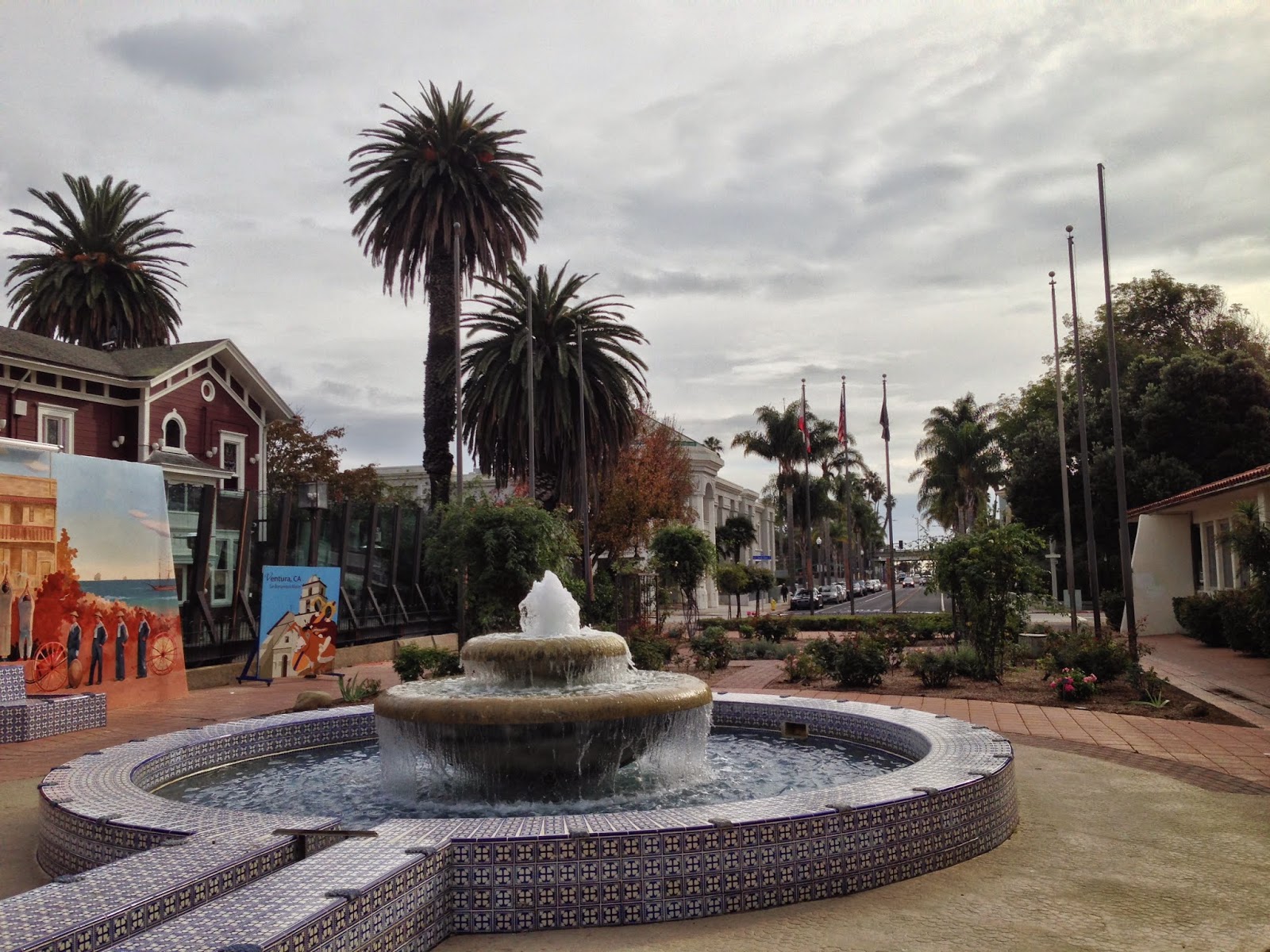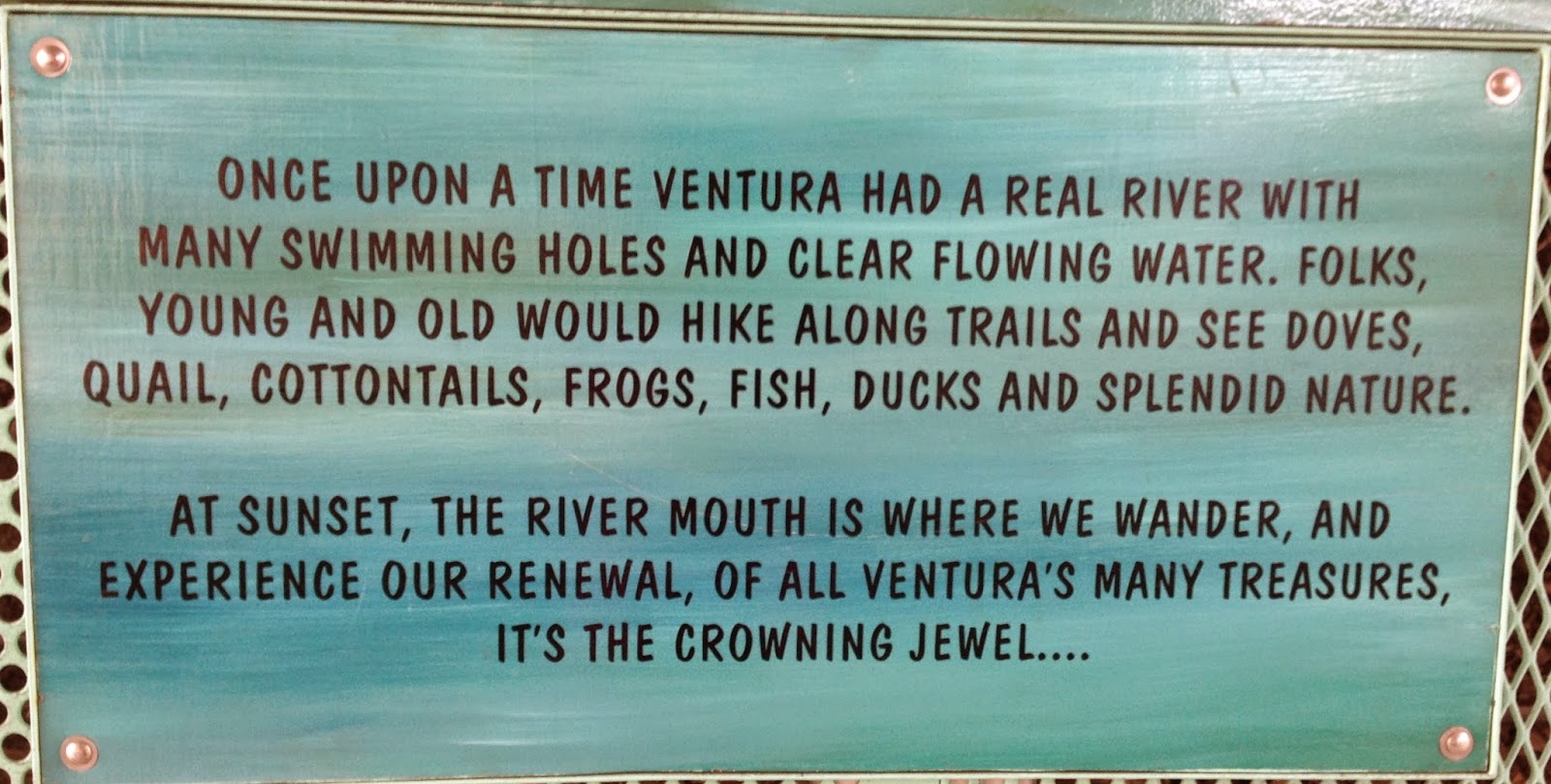Tuesday, December 16, 2014
The cue for the peacocks to gather at our campsite in the mornings seemed to be the sound of us opening our windows and screen door. Some stepped across our mat and often one would stop a while, peer in and chat with me.
Peacocks are not indigenous to North America. I learned that the origin of the peacocks that inhabit the Peninsula (Palos Verdes) is not very clear, but the most popular story suggests that the birds originally came from India. Frank Vanderlip Sr., who owned most of the Peninsula in the 1920s, visited his friend Lucky Baldwin’s estate in Arcadia. Vanderlip is believed to have admired Baldwin’s flock of peacocks that had originally been imported from India. When Vanderlip commented that his own estate was rather quiet, Baldwin gave him six peacocks to ‘liven up the place'. I wonder if the Ventura Ranch peacocks are descendants of the peacocks from Vanderlip's or Baldwin's estate.
Campground lodging
Today, we explored Ventura, a forty minute drive from our campground. http://www.cityofventura.net/about/history
Museum of Ventura County
http://venturamuseum.org
No photo taking was permitted in the museum.
In 2010, the museum commissioned George Stuart, artist and historian, to create the Lone Woman of San Nicolas Island. The girl in the children's novel Island of the Blue Dolphins by Scott O'Dell is inspired by this woman. We do not know her Native name. She was given a Spanish name by a priest at the Santa Barbara Mission. She was the last surviving member of her tribe, the Nicoleno. She lived alone on the island from 1835 to 1853 when she was discovered by a fur trapper, George Nidever. He brought the woman to the Santa Barbara Mission, where she died seven weeks later from dysentery. She is buried in the Nidever family plot at the Santa Barbara mission.
https://www.sbnature.org/research/anthro/chumash/lowom.htm
In the exhibit of the Chumash people, I learned about the Santa Cruz Island fox. The Chumash considered the fox to be a sacred animal--a pet of the sun, and possibly a dream helper. The island Chumash performed a fox dance and may have used the pelts of foxes to make arrow quivers, capes, and headdresses.
The fox is four pounds and the size of a small house cat. The Santa Cruz Island fox has historically been the island’s top predator for thousands of years. However, species and human disturbances caused the near extinction of the native fox population.
The Nature Conservancy, the National Park Service, U.S. Fish and Wildlife Service and the California Department of Fish and Game worked together to save the island fox. In less than a decade, the fox population has made an unprecedented recovery-- heralding it as one of the fastest and most successful endangered species recovery programs in U.S. history.
http://www.nature.org/ourinitiatives/regions/northamerica/unitedstates/california/explore/saving-the-santa-cruz-island-fox.xml
http://www.nps.gov/chis/naturescience/island-fox.htm
Comak is the Chumash word for a cooking stone. The stone is steatite which can be heated multiple times without breaking. There is a hole in the cooking stone to take it out of the fire with a wooden lifting tool.
"Not An Entrance"

This plaque is in front of a mural, some of it is visible in the above photo. The wall mural was created in 2004 to honor the legacy of the Chinese settlers. The Ventura County Chinese American Historical Society commissioned Chinese artist Qi Pang and his wife Guo Song Yun to create the China Alley Memorial Mural. It depicts the simple wooden buildings that made up a completely self-contained community with its own shops, businesses, rooming houses, and a Taoist Temple that non-Chinese called “The Joss House.”
http://www.totallylocalvc.com/dyk-016-china-alley/
The following photos are from our walk to Ventura Beach. Tortilla Flats, Ventura's first neighbourhood, was a working class community of diverse cultures. The neighbourhood was razed during the highway construction in the 1940's and 1950's. MB Hanrahan and Moses Mora were commissioned by the city to share the history of Tortilla Flats in murals that are displayed under the freeway. http://www.cityofventura.net/press-release/tortilla-flats-neighborhood-reborn-public-art-mural-beneath-us-101-freeway-april-14-18
The following photos are from Surfer's Point at Seaside Park.





























No comments:
Post a Comment